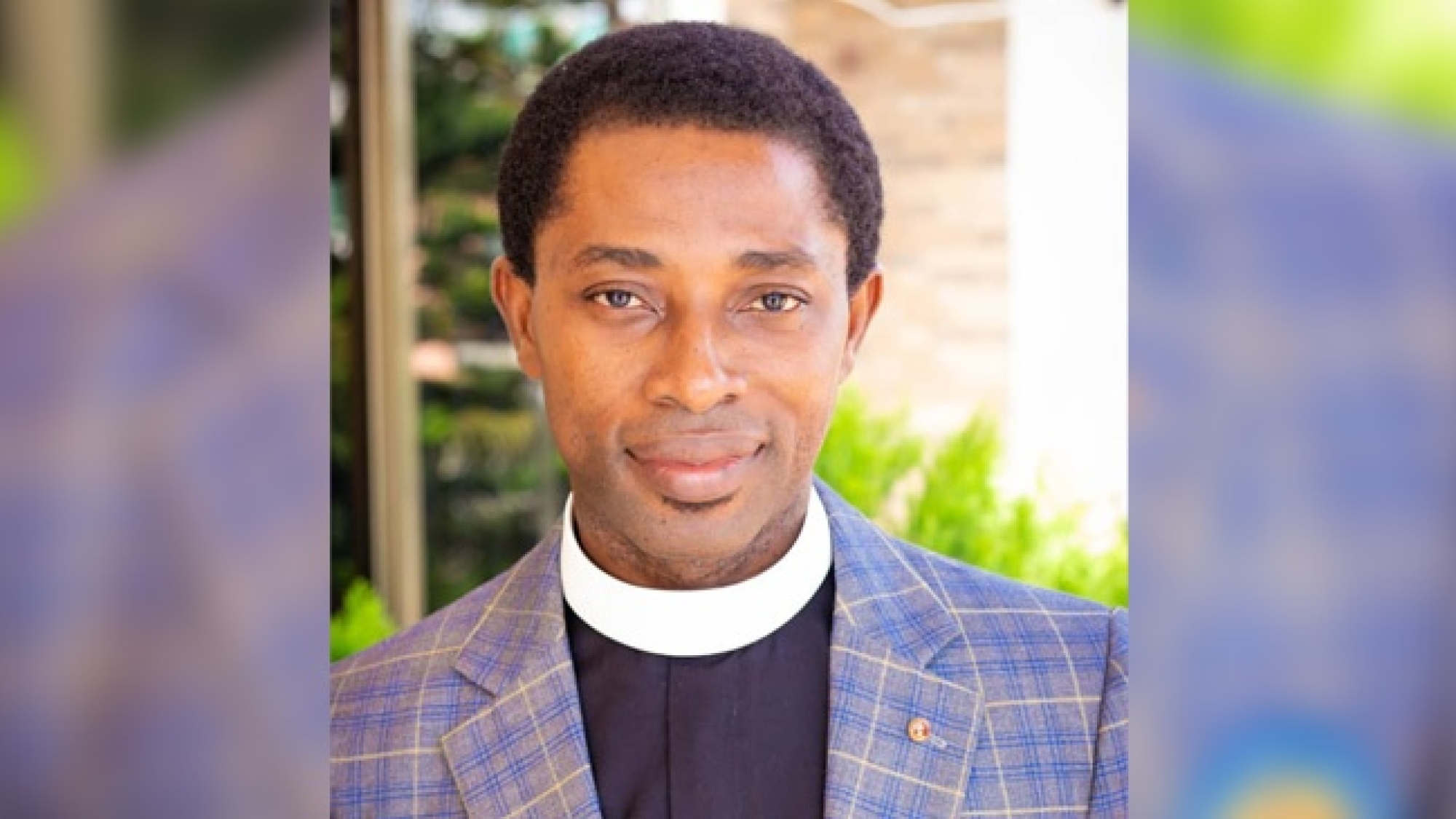INTRODUCTION
The Church of Pentecost (CoP), one of the largest Pentecostal churches in the world, has long been known for its strong ministry structures. Ministries are not simply functional arms of the church; they are the very wings of the church. Just as a bird cannot take flight without wings, the church cannot advance without its ministries. These ministries give direction, balance, and strength to the life of the church, making them indispensable in fulfilling its mission.
Broadly, the ministries of The CoP can be grouped into two main categories: the traditional ministries, which have served as the backbone of the church for decades, and the new ministries, which were birthed under the Possessing the Nations Agenda to address emerging societal and spiritual needs. The traditional ministries have been pivotal in sustaining growth and nurturing generations of believers, while the new ministries have extended the church’s reach to groups and contexts that were previously overlooked.
However, there exists a significant research gap regarding the acceptance and integration of these new ministries within the wider body of the church. While the leadership has emphasised their importance in complementing the traditional structures, some members perceive them as unnecessary innovations. As a result, many are not joining these ministries, others are withholding support for their activities, and in some cases, those who willingly and genuinely support them are marginalised. This is especially evident in the case of the Home and Urban Missions (HUM), where workers are sometimes unfairly labelled as associating with outcasts because of the groups they minister to. Such attitudes not only undermine the purpose of these ministries but also weaken the collective mission of the church.
It is therefore crucial to examine the historical development, roles, and significance of both the traditional and new ministries, and to highlight how they complement each other in casting a stronger gospel net. By doing so, the misconceptions can be addressed, and the importance of unified support for all ministries can be reinforced, ensuring that no soul is left behind when the church advances to possess the nations.
THE TRADITIONAL MINISTRIES: THE STRONG WINGS OF THE CHURCH
The traditional ministries of The CoP have served as the strong wings of the church for decades. They were not formed by accident, but out of genuine needs that arose at different points in the church’s history. These ministries became the organised expressions of discipleship, fellowship, and evangelism, and they continue to sustain the growth of the church today.
The Evangelism Ministry has always been the spearhead of the church’s mission. Evangelism was the heartbeat of The Church of Pentecost from its earliest days under Pastor James McKeown, and as the church expanded, there was a pressing need to establish a structured body that could coordinate outreach, crusades, and mission work both locally and internationally. This ministry directs its focus to the unsaved population in villages, towns, cities, and even across continents. Its activities have included street evangelism, open-air crusades, dawn broadcasts, house-to-house witnessing, revival meetings, and tract distribution. Evangelism teams are trained and mobilised, ensuring that every local assembly takes an active role in soul winning. Through this ministry, the church continues to keep evangelism at the very centre of its identity.
The Women’s Ministry of The CoP has a rich history that even predates the official formation of the church in 1962. It began as the Women’s Movement in 1945, organised by Rev. Adam McKeown, Mrs. Sophia McKeown, and Mrs. Christiana Obu, and was officially inaugurated in 1952. In 1951, Mrs. Sophia McKeown, the wife of the founder, further strengthened this fellowship by gathering the wives of church officers for prayer and encouragement. Over time, what started as a small movement of women praying and assisting in church and public life developed into a full ministry dedicated to nurturing women both spiritually and socially. The Women’s Ministry has since grown into a vibrant arm of the church, organising weekly prayer meetings, Bible studies, marriage counselling sessions, and discipleship classes tailored to the needs of women. Beyond its spiritual role, it has been instrumental in hospital visitation, charitable works, and orphanage support, while also empowering women through skills training and economic initiatives. With its strong emphasis on prayer, service, and community care, the Women’s Ministry has remained a vital pillar of the CoP, faithfully sustaining its mission for decades.
The Pentecost Men’s Ministry, popularly known as PEMEM, has also played a crucial role in the life of the church. Although men’s fellowships existed informally for many years, PEMEM was formally launched in 1997 with the vision of raising responsible and godly men who would lead with integrity in the family, church, and society. Its activities include monthly fellowship meetings for teaching and discipleship, men’s conventions and retreats for revival, and training sessions focused on marriage, fatherhood, and leadership. PEMEM has also been a driving force behind evangelism, mission support, and church-building projects, with men often contributing financial and logistical resources to sustain the church’s mission. The ministry continues to mentor younger men while encouraging seasoned ones to be exemplary Christian leaders in every sphere of life.
The Youth Ministry is one of the most vibrant arms of the church. Its beginnings can be traced back to 1948 when groups of young converts organised themselves for prayer and Bible study. By the 1960s, the church recognised the unique needs of young people and formally instituted the ministry. The Youth Ministry primarily targets those between the ages of 12 and 35, including students, young professionals, and apprentices. Its activities range from youth rallies and crusades to campus evangelism, discipleship camps, leadership training programmes, and mentorship initiatives. It also provides platforms for creative expression through music, drama, and media, giving young people opportunities to use their talents for the glory of God. For decades, the Youth Ministry has been a training ground for leadership, producing many of the pastors, elders, and officers who serve the church today.
The Children’s Ministry of the Church was established in the early years of the church out of a strong conviction that children are not only the future of the church but also an active part of its present. It began informally when Sunday school teachers and committed mothers started gathering children to teach them Bible stories, songs, and memory verses in ways they could easily understand. This informal effort was later formalised into a full ministry that provided structured discipleship and moral training for children. Over the years, the Children’s Ministry has grown into a vital wing of the church, organising Sunday school classes, Bible clubs, and Vacation Bible Schools, while also engaging children through drama, recitations, quizzes, and worship participation. Beyond spiritual formation, it partners with parents to instil discipline, respect, and responsibility, ensuring that children are nurtured holistically. Many of the current pastors, elders, deacons, and leaders of the church trace their Christian foundation back to the Children’s Ministry, making it one of the most strategic arms of the Church for sustaining faith from one generation to the next.
Together, these ministries have shaped the identity and growth of the Church. Each was birthed in response to a felt need: the Evangelism Ministry to organise and intensify the church’s outreach efforts, the Women’s Ministry to provide fellowship and empowerment for women, PEMEM to raise godly men as spiritual and social leaders, the Youth Ministry to disciple and mobilise the younger generation, and the Children’s Ministry to lay strong biblical foundations in the lives of children at their most formative stage. These ministries became the wings on which the Church soared. However, as effective as they were, their broad approaches meant that some specific groups remained unreached. Certain people continued to slip through the holes of the net, making it necessary for new ministries to emerge to complement the existing ones.
THE NEW MINISTRIES AND THEIR INTERVENTIONS
The Birth of the New Ministries: Responding to Emerging Needs
The new ministries of The Church of Pentecost were not created arbitrarily; they were birthed as deliberate responses to emerging societal, cultural, and spiritual needs. Their formation is directly tied to the church’s strategic vision plans, particularly the Possessing the Nations Agenda.
During Vision 2023 (Phase One of the Possessing the Nations Agenda), the church recognised that although the traditional ministries had done remarkably well, there were still gaps in evangelism and discipleship. Entire groups of people were being overlooked, including persons with disabilities, marginalised, urban dwellers, traditional rulers, school children, and professionals in workplaces. To address these gaps, the church birthed a cluster of new ministries, including the Home and Urban Missions (HUM), Ministry to Persons with Disabilities (MPWDs), Ministry to the Chieftaincy Institution, School Outreach Ministry (SOM), Pentecost Workers’ Guilds, Chaplaincy Ministry, Counselling Ministry, and the Prisons Ministry. These ministries were therefore born out of necessity; to reach those who had slipped through the “wide holes” of the traditional ministries.
Later, under Vision 2028 (Phase Two of the Possessing the Nations Agenda), the church expanded further to address the growing challenges of globalisation and religious diversity. Three key ministries were birthed during this phase: the Ministry in the Digital Space (E-Church), the Other Sheep Ministry (TOSM), and the Ministry to Celebrities. The rise of digital communication and the global shift toward online interaction made it imperative for the church to establish a permanent online presence for evangelism, discipleship, and fellowship, hence the birth of the E-Church. Likewise, the Other Sheep Ministry was conceived to focus specifically on people of other faiths, such as Muslims, Buddhists, Hindus, and adherents of African Traditional Religion. These are groups that had often been hard to reach through conventional approaches. In addition, the Ministry to Celebrities emerged out of the recognition that cultural influencers such as musicians, actors, footballers, and media personalities shape societal values, and therefore reaching them with the gospel was crucial so that they too might become ambassadors of Christ within their spheres of influence.
Thus, while the majority of the new ministries were introduced during Vision 2023, the E-Church, Other Sheep Ministry and Ministry to Celebrities stand out as Vision 2028 initiatives, both of which reflect the church’s responsiveness to contemporary realities and its unyielding commitment to reaching all people, in all places, by all means possible.
STRATEGIC INTERVENTIONS OF THE NEW MINISTRIES
The HUM ministry is specifically designed to reach those who often fall through the cracks of society. It organises outreach programmes in urban slums, migrant communities, ghettos, and neglected inner-city neighbourhoods. HUM intervenes in the lives of drug addicts, prostitutes, street children, and unreached ethnic groups by combining evangelism with rehabilitation. Practical support, such as shelter, vocational training, and reintegration programmes is offered alongside gospel preaching. HUM reflects the heartbeat of Christ, who came to seek and save the lost.
The MPWDs embodies Christ’s inclusive love. Beyond simply creating accessibility, this ministry provides sign language interpretation during services, produces Braille and audio Bible materials, and organises specialised fellowship groups for persons with disabilities. It also advocates for their dignity within society, countering stigma and marginalisation. Through empowerment programmes, it helps members discover their spiritual gifts, reminding the church that disability does not disqualify anyone from serving in God’s Kingdom.
The Ministry to the Chieftaincy Institution acknowledges the enormous cultural influence of traditional rulers. This ministry reaches out to chiefs, queens, and royals, recognising their role as custodians of heritage. Interventions include organising seminars for chiefs on servant leadership, building chapels within palaces, and offering pastoral care for traditional rulers who come to faith. By building bridges between the gospel and cultural authority, this ministry ensures that Christ is honoured not only in churches but also in traditional seats of power.
The SOM targets children and young adolescents, who form the future of both church and society. It conducts evangelistic programmes in primary and junior high schools, runs Bible clubs, and distributes Christian literature to pupils. It also trains teachers and volunteers to disciple students in Christ-like values. Through mentorship, leadership training, and character development, it sows seeds of faith early, shaping the next generation to grow into mature believers who influence society for Christ.
The Ministry to Celebrities focuses on engaging influential personalities such as musicians, actors, footballers, business moguls, social media influencers, and media personalities. Its interventions include private discipleship programmes, networking events, and mentorship sessions. The aim is not merely conversion but transformation, so that those celebrities, once won to Christ, will use their platforms to shape culture positively and spread kingdom values across media and entertainment spaces.
TOSM, inspired by John 10:16, engages people of other faiths, such as Muslims, Buddhists, Hindus, and Traditionalists. Its interventions include interfaith dialogue, contextualised evangelism, apologetics training, and building trust in religiously diverse communities. This ministry promotes respectful witness, seeking to invite others into the one-fold of Christ while preserving peace and understanding.
The E-Church addresses the growing reality of the digital mission field. It organises online worship services, discipleship classes, and prayer meetings across platforms such as Facebook, YouTube, and Zoom. It also creates mobile apps, podcasts, and digital devotional resources. This ministry allows people who cannot attend physical gatherings, because of location, disability, or circumstance, to encounter Christ and grow in Christian community.
The Pentecost Workers’ Guilds organise members into professional and vocational groups, creating networks of influence. Lawyers, doctors, teachers, artisans, traders, and civil servants are grouped and trained on how to live out their faith in the workplace. Collectively, the guilds impact institutions with kingdom values, transforming ethics, governance, and service delivery in alignment with Vision 2028.
The Counselling Ministry responds to the emotional, psychological, and spiritual needs of people in today’s world. It provides Christ-centred guidance for those dealing with marital challenges, trauma, depression, grief, and addiction. It also organises workshops on family life, emotional intelligence, and conflict resolution. By offering holistic care, this ministry ensures that individuals not only cope with life’s challenges but also thrive through godly wisdom.
The Chaplaincy Ministry extends pastoral presence beyond church walls into workplaces, schools, palaces, hospitals, and security services. Chaplains provide spiritual direction, moral counsel, and prayer support, embedding Christian values in decision-making processes at multiple levels of society. In this way, the ministry helps shape leadership and governance with kingdom principles.
Finally, the Prisons Ministry carries the gospel behind bars, bringing hope to inmates, ex-convicts, and prison officers. It organises Bible studies, literacy classes, and skills training programmes while also providing reintegration support for ex-convicts. The ministry testifies to the redeeming power of God’s grace, as many hardened criminals have become transformed, with prisons turning into worship centres.
CONCLUSION: STRENGTHENING THE WINGS, CASTING THE NET WIDER
The ministries of The CoP, both traditional and new, remain indispensable to the life and mission of the church. The traditional ministries, including Evangelism, Women’s, Men’s (PEMEM), Youth, and Children, have laid the foundation of discipleship, fellowship, and outreach for decades, serving as the strong wings on which the church has soared. They were birthed out of genuine needs at specific times and have been instrumental in shaping generations of believers and sustaining the global growth of the church.
Yet, as effective as they have been, the evolving dynamics of society revealed gaps in evangelism and discipleship. Certain groups continued to slip through the “wide holes” of the traditional nets, prompting the need for new ministries under the Possessing the Nations Agenda. The HUM, MPWDs, Chaplaincy, Counselling, Prisons, and other newly established ministries were created to reach those previously unreached, while the E-Church, the Other Sheep Ministry, and the Ministry to Celebrities have extended the church’s witness into new cultural, religious, and digital frontiers. These ministries are not competitors but complements, ensuring that no soul is left behind when the gospel net is cast.
However, the challenge remains that some members perceive these new ministries as unnecessary, withholding their support or even marginalising those who actively serve in them, particularly HUM workers. Such attitudes weaken the collective mission of the church and undermine its vision of transformation. For the ministries to thrive and for the gospel net to gather all kinds of fish, leaders and members alike must give their maximum support through prayer, participation, and resources. They must avoid labelling or discouraging those who willingly engage in these ministries, recognising that their efforts are directed toward fulfilling the great commission of Christ.
In the end, the health of The CoP lies in the unity and synergy of both its old and new ministries. The wings must continue to give the church flight, and the nets must be strengthened to catch broadly. When these ministries are embraced and supported as one, the church will continue to advance its vision of possessing the nations: transforming every sphere of society with the values and principles of the Kingdom of God.
Written by Pastor Emmanuel Foster Asamoah (HUM Pastor, Achimota Sector / Coordinator, PCUPGs, Africa)














